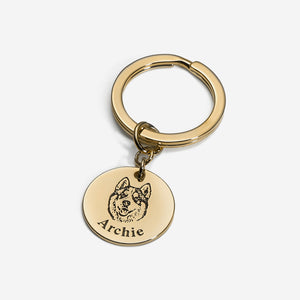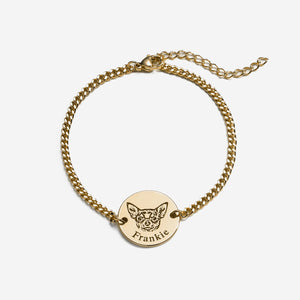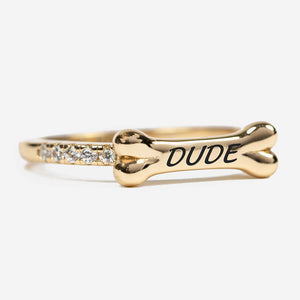I don’t know about you, but I’m definitely ready for some warmer weather to come. More sunshine, looking for things to turn green again, and better weather for experiencing the great outdoors! And if you’re thinking about taking your dog along for some adventurous hikes, this is the place for you! You’ll definitely want to know the do’s and dont’s of hiking with your dog.
“But a hike is so simple!”, you may think, but it’s not the same as strolling down the sidewalk outside your house with Fido for a few minutes. Hikes involve long stretches of activity, new surroundings like plants, water, or tough terrain, and tons of unknowns. Nature has more elements to factor in when you’re trouncing around through the woods. While you may think at first that your dog is an animal, and therefore should be totally fine with whatever nature throws your pup’s way, it’s important to prepare properly for an exciting hike with your dog!
1. Are They Fit Enough?
Even though your dog is an animal, not all dogs are built for outdoor expeditions. Their age, training, and even their breed can make a hike more difficult or even dangerous. When you’re thinking about bringing your pooch along, here are some things you should think about:
 Is your dog too young or old? A young puppy should have all of its vaccinations before running around in the mud. While it may be tempting to bring your newest best friend along for the hike, a very young pup that isn’t fully vaccinated is more susceptible to picking up bugs and diseases due to its still-developing immune system. They are also a lot more likely to get tired quickly, so you should be prepared to quit early if your pup gets too tired.
Is your dog too young or old? A young puppy should have all of its vaccinations before running around in the mud. While it may be tempting to bring your newest best friend along for the hike, a very young pup that isn’t fully vaccinated is more susceptible to picking up bugs and diseases due to its still-developing immune system. They are also a lot more likely to get tired quickly, so you should be prepared to quit early if your pup gets too tired.
You should also be very considerate of your older dog’s ability to go on long hikes. As your dog reaches its golden years, it will be more susceptible to the heat or cold, get tired more easily, or even be more prone to injury should something like a slip or fall happen. If your dog has health issues, be sure to check with your vet before bringing them along more exhaustive trips. Be gentle with your older pup, and consider taking easier, shorter routes with them.
Is your dog’s breed fit for hiking? Short muzzled dogs are already more prone to breathing issues and respiratory illnesses. Dogs with shorter snouts, like pugs, struggle to deal with heat and their bodies are less tolerant of over-exercise. These dogs should take shorter trips, be protected from too much sunlight or muggy weather, and monitored more closely for signs of health issues.
Is your dog mature enough? Your dog should be rock-solid when it comes to their training and behavior. When a dog is in a new and exciting place, it’s much easier to be distracted or forget their manners. Your dog should specifically have a strong recall (coming back to you on command), less likely to dart off on impulse, and should be socially adept. The last thing you need is for your dog to get lost out in the woods far from home, or to have an incident like a dog fight where you will have to travel a long way back to your car to get your dog to the vet for medical care.
2.Location
You should think about where you’re taking your dog before you toss them in the car and drive off to your favorite outdoor place. Just because you already had a favorite spot before doesn’t mean it will be the optimal hike for your furry companion. There are a few questions you should ask yourself about where you’re going before you rush out the door with your pup.
 Is it dog friendly? It’s easy to assume that your dog should be able to go anywhere with you as long as it’s outside. However, there are some places that may require you to have your dog on a leash, or not be dog friendly at all. This may feel unfair, but these rules are in place for a reason. Wherever you go, try to check ahead of time to ensure that the place you’re going is dog-friendly!
Is it dog friendly? It’s easy to assume that your dog should be able to go anywhere with you as long as it’s outside. However, there are some places that may require you to have your dog on a leash, or not be dog friendly at all. This may feel unfair, but these rules are in place for a reason. Wherever you go, try to check ahead of time to ensure that the place you’re going is dog-friendly!
Is a leash required? It’s important to respect the rules of your desired hiking spot, and that includes checking if your dog is required to be on a leash. Even if your dog is the most bestest, most loyal follower in the world, it is generally a good idea to have them on a leash when you’re hiking. The area may have wildlife that is very tempting to chase off into the woods. Or, you may find yourself on a tricky path where you need to help guide your dog in the right direction. If you’d like to let your dog roam around somewhere off-leash, it’s best to pick a different area that doesn’t have rules specifically against it that you know well enough to be sure your pup is safe.
Are the trails well-suited for dogs? It’s easy to forget that your dog isn’t wearing boots to protect its feet from sharp rocks or burning-hot pavement. Even if you’re comfortable walking a specific trail, consider that your dog is essentially barefoot. Generally, the best trails for your dog will be shady, with a soft, even walking surface, such as a place where the ground is covered in dirt or leaves. It’s a good idea to make sure your dog’s claws are properly trimmed, because the posture they use while walking can be affected if their claws are really digging into the dirt. If a dog’s claws are in the dirt, they unconsciously walk and distribute their weight as if they were climbing a hill, which can cause joint issues over time. By the way, if you need help trimming your dog’s claws, you can check out this article on how to trim your dog’s claws, even if they hate it.
3.Preparing
If you’re planning to go on a long hike yourself, what do you do? Well, you probably don’t walk out the door in your pajamas, and you certainly don’t forget to pack snacks and water! You should make sure that, when bringing your dog on a hike, you also take the extra time to prepare your pup.
Did you vaccinate and medicate your dog? Like I said before, your dog should be up to date on its vaccinations. It should also have preventative medication for fleas and ticks, which can carry some nasty or even deadly diseases, like Lyme disease. If you’re not sure how to properly prevent fleas and ticks, you can ask your vet for recommendations. Usually you can choose oral or topical flea and tick medications, or they make special collars that can prevent fleas and ticks. It’s up to you to choose what’s right for your pup.
Did you pack food and water? If you’re not sure what you will need or how much, a good rule of thumb is this: If you’re on a hike with your dog and you have a snack, they probably need one too. If you’re thirsty, give your dog some water as well. The best snack you can have for your dog is some dry kibble that has a higher fat content. And make sure you bring a collapsible water bowl too!
 Do you have a first aid kit? Just like you should have a first aid kit for yourself, it’s a good idea to have one for your dog too. You can get some more specifics on doggy first aid here. As for your kit, you can make one yourself, or pick one up at a store or online.
Do you have a first aid kit? Just like you should have a first aid kit for yourself, it’s a good idea to have one for your dog too. You can get some more specifics on doggy first aid here. As for your kit, you can make one yourself, or pick one up at a store or online.
4.How To Have The Best Hike
Okay, you’ve gotten this far… let’s finally talk about your hike! There are some best practices for having the best time with your pup, as well as some common courtesy and safety tips.
Practice short hikes first. This is a good way to get your dog used to hikes in general, and it can help you figure out how much exercise your dog can tolerate. On your first short hike you may find that your dog gets tired quickly, or that you may need more water than you first thought. It’s a great chance for you to get to know how your dog behaves and reacts to the hike so when you’re ready for a long one your pup is too!
Pick up after your pup. It’s not the most fun thing to do, and it’s easy to just walk off like nothing happened, but you really should pick up after your dog. Not only is it annoying to step into a mess on the trail, but dog droppings can be harmful to certain local nature. If you’re on a really long hike you can either double-bag it to make packing it out less miserable, or bring a trowel and bury it at least 8 inches in the ground, a ways off from the trail.
 Respect trail rules and etiquette. You should know if the place you’re going to has any specific rules for dogs, like the leash rule. Also be sure to practice common courtesy on the trail, like stepping to the side when someone else is coming your way. Let other people know if your dog is friendly, and don’t always assume that someone else will be accepting of your dog running up to them. Give space to other humans and dogs, as some people are scared of dogs, and some other dogs may be reactive.
Respect trail rules and etiquette. You should know if the place you’re going to has any specific rules for dogs, like the leash rule. Also be sure to practice common courtesy on the trail, like stepping to the side when someone else is coming your way. Let other people know if your dog is friendly, and don’t always assume that someone else will be accepting of your dog running up to them. Give space to other humans and dogs, as some people are scared of dogs, and some other dogs may be reactive.
Don’t let your dog run off. Dogs are wonderful and curious, but you should practice a little caution. You don’t want your dog to run off chasing something and not know how to get back to you. It may find creatures that aren’t interested in playing, or that could even hurt it. Don’t let your dog find a danger noodle- nobody needs a snake bite out in the middle of nowhere, so play it safe and keep your dog close by.
Don’t let them drink bad water. Especially water that is standing still, or near cattle or campsites. Untreated water might contain bad bugs and diseases that can make your dog very sick. You wouldn’t want to ruin a perfectly good hike with a bout of doggy diarrhea, would you? Didn’t think so! You should also be aware of any warnings about local water when it comes to allowing your dog to swim in it. Sometimes there can be higher levels of things like E. Coli or certain chemicals. When in doubt, keep your pup dry.
Are You Excited For Spring?
I am too! So done with all this snow! Bring on the sunshine and green stuff! Anyway, let us know what you’re looking forward to most when the weather warms up. I hope you and your pup are staying healthy and happy, and I look forward to writing for you again next week!







